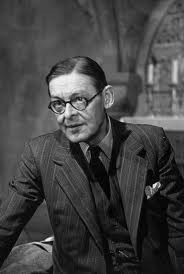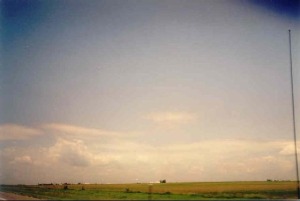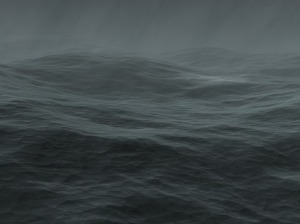new posts in all blogs
Viewing: Blog Posts Tagged with: objective correlative, Most Recent at Top [Help]
Results 1 - 3 of 3
How to use this Page
You are viewing the most recent posts tagged with the words: objective correlative in the JacketFlap blog reader. What is a tag? Think of a tag as a keyword or category label. Tags can both help you find posts on JacketFlap.com as well as provide an easy way for you to "remember" and classify posts for later recall. Try adding a tag yourself by clicking "Add a tag" below a post's header. Scroll down through the list of Recent Posts in the left column and click on a post title that sounds interesting. You can view all posts from a specific blog by clicking the Blog name in the right column, or you can click a 'More Posts from this Blog' link in any individual post.
 The objective correlative is a fantastic technique that you can use to create emotion in your writing. It empowers writers to move away from abstraction (i.e. using direct words like angry, sad, or afraid, which are abstract to the reader) and color a character’s emotion with imagery, metaphor, and meaning.
The objective correlative is a fantastic technique that you can use to create emotion in your writing. It empowers writers to move away from abstraction (i.e. using direct words like angry, sad, or afraid, which are abstract to the reader) and color a character’s emotion with imagery, metaphor, and meaning.
Originally coined as a literary term by T.S. Eliot in his essay on Hamlet, Eliot explains that the objective correlative as:
“…a set of objects, a situation, a chain of events which shall be the formula of that Particular emotion; such that when the external facts, which must terminate in sensory experience, are given, the emotion is immediately evoked” (qtd. in J. A. Cuddon’s Dictionary of Literary Terms, page 647).
I know, that sounds like literary psychobabble, let’s break it down…
Say, your character has experienced a loss and you want to evoke sadness and longing in the reader. Objective correlative is a technique where the character never tells the reader what she is feeling. Instead she evokes that feeling through sensory experiences and description of her environment.
 Take a look at this example from Jacqueline Woodson’s novel Beneath a Meth Moon:
Take a look at this example from Jacqueline Woodson’s novel Beneath a Meth Moon:
“I sat up front with Daddy, stared at the flat land as we drove. Big sky that I couldn’t look up into without thinking about M’lady and Mama. Green land moving fast toward us, then passing us by. Farms and fields. Whole stretches with nothing at all” (44).
What does this passage make you feel? What do you know about the narrator and her emotional state?
For me, the description of the flat land and the big sky gives a sense of being small. The fact that the narrator (Laurel) can’t look up into the sky adds an additional layer of feeling. She’s overwhelmed by something large. Additionally, that large object is invisible and everywhere. Laurel then links this image with M’lady and Mama. Do we know what happened to these two people in this passage? Not necessarily, but we can make a guess from the description of the landscape.
In the remaining sentences of the passage, the imagery focuses on green land moving past Laurel. A green field is initially a positive image, relating to good health and growth. But it moves fast and Laurel is unable to hold onto the good things, even if she wanted to. The paragraph ends with the final image of flat land stretching out forever with nothing to offer. Can you feel the desperation, sadness, and a loss of hope in this build-up of images? Nowhere does the narrator mention how she feels. Instead she describes her environment, and the unique way she sees these images, evokes her inner state for the reader. This is the objective correlative at work! It’s also a lot more interesting to read than if the author said: Laurel felt depressed.
I think it’s also important to note that characters are seldom self-aware. As humans, we don’t often think to ourselves: “Man, I feel sad!” We simply experience our emotions and live our lives. We don’t reflect on what those emotions are or why we feel them. We act! We observe. We react. Let objective correlative help you to keep your characters authentic, alive, and in the moment.
 Try out the objective correlative for yourself, with this great exercise:
Try out the objective correlative for yourself, with this great exercise:
Write a scene in which a man describes a body of water (i.e. ocean, river, pond, etc.) after having just murdered someone. However, the man can never mention the murder or any of the details related to the murder. Have fun!
Want to know more about Objective Correlative? Read these great articles:
What Is The Objective Correlative
Meaning and Metaphor


 The objective correlative is a fantastic technique that you can use to create emotion in your writing. It empowers writers to move away from abstraction (i.e. using direct words like angry, sad, or afraid, which are abstract to the reader) and color a character’s emotion with imagery, metaphor, and meaning.
The objective correlative is a fantastic technique that you can use to create emotion in your writing. It empowers writers to move away from abstraction (i.e. using direct words like angry, sad, or afraid, which are abstract to the reader) and color a character’s emotion with imagery, metaphor, and meaning.
Originally coined as a literary term by T.S. Eliot in his essay on Hamlet, Eliot explains that the objective correlative as:
“…a set of objects, a situation, a chain of events which shall be the formula of that Particular emotion; such that when the external facts, which must terminate in sensory experience, are given, the emotion is immediately evoked” (qtd. in J. A. Cuddon’s Dictionary of Literary Terms, page 647).
I know, that sounds like literary psychobabble, let’s break it down…
Say, your character has experienced a loss and you want to evoke sadness and longing in the reader. Objective correlative is a technique where the character never tells the reader what she is feeling. Instead she evokes that feeling through sensory experiences and description of her environment.
 Take a look at this example from Jacqueline Woodson’s novel Beneath a Meth Moon:
Take a look at this example from Jacqueline Woodson’s novel Beneath a Meth Moon:
“I sat up front with Daddy, stared at the flat land as we drove. Big sky that I couldn’t look up into without thinking about M’lady and Mama. Green land moving fast toward us, then passing us by. Farms and fields. Whole stretches with nothing at all” (44).
What does this passage make you feel? What do you know about the narrator and her emotional state?
For me, the description of the flat land and the big sky gives a sense of being small. The fact that the narrator (Laurel) can’t look up into the sky adds an additional layer of feeling. She’s overwhelmed by something large. Additionally, that large object is invisible and everywhere. Laurel then links this image with M’lady and Mama. Do we know what happened to these two people in this passage? Not necessarily, but we can make a guess from the description of the landscape.
In the remaining sentences of the passage, the imagery focuses on green land moving past Laurel. A green field is initially a positive image, relating to good health and growth. But it moves fast and Laurel is unable to hold onto the good things, even if she wanted to. The paragraph ends with the final image of flat land stretching out forever with nothing to offer. Can you feel the desperation, sadness, and a loss of hope in this build-up of images? Nowhere does the narrator mention how she feels. Instead she describes her environment, and the unique way she sees these images, evokes her inner state for the reader. This is the objective correlative at work! It’s also a lot more interesting to read than if the author said: Laurel felt depressed.
I think it’s also important to note that characters are seldom self-aware. As humans, we don’t often think to ourselves: “Man, I feel sad!” We simply experience our emotions and live our lives. We don’t reflect on what those emotions are or why we feel them. We act! We observe. We react. Let objective correlative help you to keep your characters authentic, alive, and in the moment.
 Try out the objective correlative for yourself, with this great exercise:
Try out the objective correlative for yourself, with this great exercise:
Write a scene in which a man describes a body of water (i.e. ocean, river, pond, etc.) after having just murdered someone. However, the man can never mention the murder or any of the details related to the murder. Have fun!
Want to know more about Objective Correlative? Read these great articles:
What Is The Objective Correlative
Meaning and Metaphor


Yippeeeeeeeeeeeee!!!!!!!!!!!!!!!!!! I have finished my third semester at Vermont College of Fine Arts. This one was more challenging than the first two because it was the critical thesis semester. I really got into my topic - the illustrious objective correlative. So much so, I applied higher math to literature. Yes, this is what weeks of researching a topic will do to you, collide the left and right halves of your brain until you're combing math and words. Craziness...it's all part of the graduate school experience.
After I honed an cut, crafted and styled my thesis, I spent the rest of the semester sculpting the beginnings of a new piece. It was all about layering this time around. Coming up with the basic foundation, i.e. character and problem. Layering scene on top of that. Then external plot. Emotional plot. It was like creating a painting very painstakingly from the canvas up, hyperaware of each layer and the role it plays in the final perception of color and composition.
So, all in all, a successful semester. And only one left!
What this graduate experience has thus far taught me is that even if Socrates was a little glib when he said, "I know that I know nothing"...I know that I know nothing. There is so much to learn about any field--any craft--and writing is no exception. I will spend the rest of my life learning about it, glorying and despairing in the nuances of the written word and my ability to use it (hopefully glorying a little more than despairing!).
The critical work has imparted the same lesson it did during my PhD, structure, analysis, description and interpretation. It helps me to be able to organize the parts to story and know how they work together, what tools are available, which one I want to tinker with, and how other writers have done so in the past. I need that kind of direction in my writing.
Next semester it is all creative, all the time. I am curious to see, what I learn then?
 The objective correlative is a fantastic technique that you can use to create emotion in your writing. It empowers writers to move away from abstraction (i.e. using direct words like angry, sad, or afraid, which are abstract to the reader) and color a character’s emotion with imagery, metaphor, and meaning.
The objective correlative is a fantastic technique that you can use to create emotion in your writing. It empowers writers to move away from abstraction (i.e. using direct words like angry, sad, or afraid, which are abstract to the reader) and color a character’s emotion with imagery, metaphor, and meaning. Take a look at this example from Jacqueline Woodson’s novel Beneath a Meth Moon:
Take a look at this example from Jacqueline Woodson’s novel Beneath a Meth Moon: Try out the objective correlative for yourself, with this great exercise:
Try out the objective correlative for yourself, with this great exercise:



Thanks for this explanation. I’m trying to use the objective correlative in my novel, because my main character isn’t one to show his feelings much. Maybe this technique is a good way to portray his feelings.
Nice, Ingrid. A very useful post.
It’s a great way to help communicate the emotions of a character who doesn’t show what they feel!
You have been nominated for the Wonderful Team Member Award and the Versatile Blogger Award. Congrats! Here are the details: http://lmarie7b.wordpress.com/2013/05/18/one-post-to-thank-them-all/